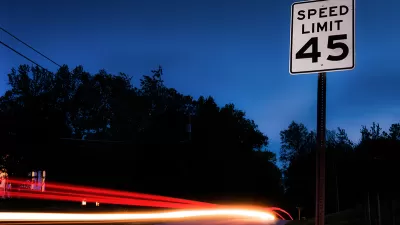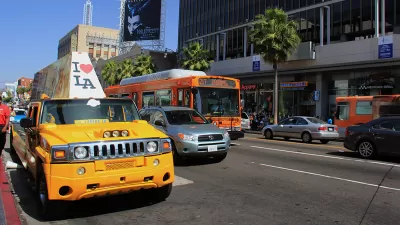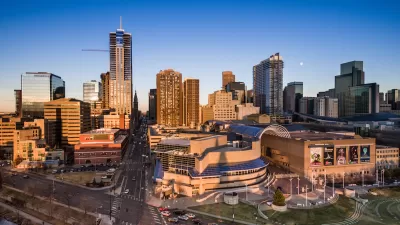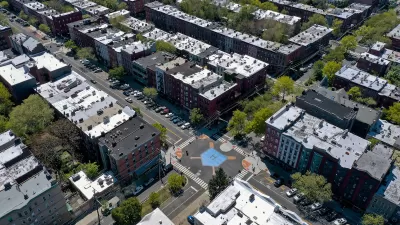In California and much of the rest of the country, says Andrew Said, the laws governing speed limits and enforcement are dangerously outdated, especially where pedestrians and cyclists are concerned. What could we change?

They aren't part of the built environment, but laws often dictate how safe places are to use. According to a piece by Andrew Said, California's speed limit laws are outdated, and unsafe streets are the result.
For example, "In Los Angeles, police are unable to ticket speeding drivers for violating the posted speed limit on 75 percent of the city’s streets. Why not? It is because the speed surveys required by law for these streets have expired."
Those speed surveys set limits based on the "prevailing speed." That is, how fast cars are travelling in the 85th percentile. "Once this speed of majority drivers is determined, the law only allows an additional 5 mph reduction to account for unforeseen safety conditions." And that's a truly auto-centric legal method.
"In countries with the highest rates of bicycle ridership, the severity of injuries caused by crashes at a given speed is taken into account when establishing speed limits. This approach is known as Injury Minimization, or Safe Systems. The idea is to minimize the probability of death and serious injury."
Said notes that in California, Injury Minimization already exists in mandated 25-mph school zones, which must conform to that limit regardless of prevailing speed. "What about designating a pedestrian zone? Or an active transportation zone? The same rationale of protecting vulnerable road users could apply."
FULL STORY: Legal Obstacles To Safe Streets: California Speed Limit Laws

Planetizen Federal Action Tracker
A weekly monitor of how Trump’s orders and actions are impacting planners and planning in America.

The Simple Legislative Tool Transforming Vacant Downtowns
In California, Michigan and Georgia, an easy win is bringing dollars — and delight — back to city centers.

San Francisco's School District Spent $105M To Build Affordable Housing for Teachers — And That's Just the Beginning
SFUSD joins a growing list of school districts using their land holdings to address housing affordability challenges faced by their own employees.

In More Metros Than You’d Think, Suburbs are Now More Expensive Than the City
If you're moving to the burbs to save on square footage, data shows you should think again.

The States Losing Rural Delivery Rooms at an Alarming Pace
In some states, as few as 9% of rural hospitals still deliver babies. As a result, rising pre-term births, no adequate pre-term care and "harrowing" close calls are a growing reality.

The Small South Asian Republic Going all in on EVs
Thanks to one simple policy change less than five years ago, 65% of new cars in this Himalayan country are now electric.
Urban Design for Planners 1: Software Tools
This six-course series explores essential urban design concepts using open source software and equips planners with the tools they need to participate fully in the urban design process.
Planning for Universal Design
Learn the tools for implementing Universal Design in planning regulations.
Smith Gee Studio
City of Charlotte
City of Camden Redevelopment Agency
City of Astoria
Transportation Research & Education Center (TREC) at Portland State University
US High Speed Rail Association
City of Camden Redevelopment Agency
Municipality of Princeton (NJ)





























